Code Injection Reverse Engineering

About me


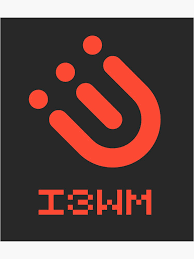



Agenda
- ELF Format
- Code Injection
- Demo
- Reversing Tools
- Dynamic Tools
- Reversing the Demo
- Challenge
ELF Format
Let's go byte by byte!
$ xxd stackoverflow | head
00000000: 7f45 4c46 0101 0100 0000 0000 0000 0000 .ELF............
00000010: 0200 0300 0100 0000 3084 0408 3400 0000 ........0...4...
00000020: 8c21 0000 0000 0000 3400 2000 0900 2800 .!......4. ...(.
00000030: 2300 2200 0600 0000 3400 0000 3480 0408 #.".....4...4...
00000040: 3480 0408 2001 0000 2001 0000 0400 0000 4... ... .......
00000050: 0400 0000 0300 0000 5401 0000 5481 0408 ........T...T...
00000060: 5481 0408 1300 0000 1300 0000 0400 0000 T...............
00000070: 0100 0000 0100 0000 0000 0000 0080 0408 ................
00000080: 0080 0408 5808 0000 5808 0000 0500 0000 ....X...X.......
00000090: 0010 0000 0100 0000 0c0f 0000 0c9f 0408 ................
Not actually, that's too painful
ELF Header
#define EI_NIDENT 16
typedef struct {
unsigned char e_ident[EI_NIDENT];
Elf32_Half e_type;
Elf32_Half e_machine;
Elf32_Word e_version;
Elf32_Addr e_entry;
Elf32_Off e_phoff;
Elf32_Off e_shoff;
Elf32_Word e_flags;
Elf32_Half e_ehsize;
Elf32_Half e_phentsize;
Elf32_Half e_phnum;
Elf32_Half e_shentsize;
Elf32_Half e_shnum;
Elf32_Half e_shtrndx;
} Elf32_Ehdr;$ readelf -h a.out ###Output modified slightly
Magic: 7f 45 4c 46 \x7fELF
Class: ELF32
Data: little endian
Version: 1 (current)
OS/ABI: UNIX - System V
ABI Version: 0
Type: EXEC
Machine: Intel 80386
Version: 0x1
Entry point address: 0x8048430
Start of program headers: 52
Start of section headers: 8588
Flags: 0x0
Size of this header: 52 (bytes)
Size of program headers: 32 (bytes)
Number of program headers: 9
Size of section headers: 40 (bytes)
Number of section headers: 35
Section header string table index: 34
e_ -- elf
ph -- program header
sh -- section header
off -- offset
ent -- entry
e_shentsize ?
e_shnum ?
e_phentsize ?
e_shtrndx ?*
Section Header
TRY:
$ readelf -S /bin/bash
### modified output
[Nr] Name Type
[ 0] NULL
[ 1] .interp PROGBITS
[ 2] .note.ABI-tag NOTE
[ 3] .note.gnu.build-i NOTE
[ 4] .gnu.hash GNU_HASH
[ 5] .dynsym DYNSYM
[ 6] .dynstr STRTAB
[ 7] .gnu.version VERSYM
[ 8] .gnu.version_r VERNEED
[ 9] .rela.dyn RELA
[10] .rela.plt RELA
[11] .init PROGBITS
[12] .plt PROGBITS
[13] .plt.got PROGBITS
[14] .text PROGBITS
[15] .fini PROGBITS
[16] .rodata PROGBITS
[17] .eh_frame_hdr PROGBITS
[18] .eh_frame PROGBITS
[19] .init_array INIT_ARRAY
[20] .fini_array FINI_ARRAY
[21] .data.rel.ro PROGBITS
[22] .dynamic DYNAMIC
[23] .got PROGBITS
[24] .data PROGBITS
[25] .bss NOBITS
[26] .gnu_debuglink PROGBITS
[27] .shstrtab STRTAB What is a section header?
What are some sections that are useful to us?
.text
.got
.data
A well defined header that gives information on a section of the binary which is unstructured.
Program Header
Program headers indicates how segments required for execution are to be loaded into virtual memory.
There exists a Sections to Segment mapping that specifies which sections are part of which segments.
Most disassemblers do all analysis based on virtual addressing

Binary Layout
Does it matter where the Program and Section headers are in the binary?
Where must the ELF Header always exist?
Are all Section or Program headers needed?
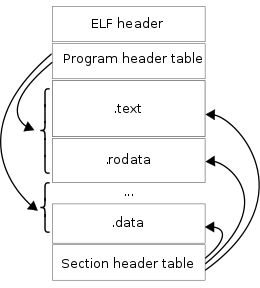
Code Injection
LD_PRELOAD
Without modifying any binary directly we can force our evil library to load before anything else!
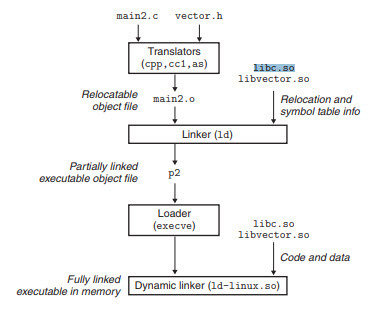
We want our library here!
Static linking stage
Dynamic linking stage
LD_PRELOAD example
#define _GNU_SOURCE
/* Most imports for things you might need, Do Not Delete any */
#include <stdio.h>
#include <stdlib.h>
#include <string.h>
#include <unistd.h>
#include <sys/socket.h>
#include <sys/stat.h>
#include <sys/types.h>
#include <errno.h>
#include <sys/fcntl.h>
#include <dlfcn.h>
#include <dirent.h>
/* Compile: gcc -Wall -fPIC -shared -o evil.so framework.c -ldl */
/* -ldl must be last!!! */
static int (*o_open)(const char *, int);
static void init (void) __attribute__ ((constructor));
/* loaded and executed when ld runs */
void init(void){
/* Get handle on original open */
o_open=dlsym(RTLD_NEXT, "open");
}
/* Try: LD_PRELOAD=./evil.so cat framework.c */
int open(const char *pathname, int flags, ...){
/* example */
printf("Hello world\n");
/* Your code here */
/* Preserve functionality */
return o_open(pathname, flags);
}Imports for libraries we want to use or hook
SO compile flags
Dynamic set up
The Hook:
- Do what we want
- Call original
Inject into a binary
This is where I recommend this book for more in depth on everything we've done today and more!
Simple injection technique is found in chapter 7.

Chapter 7 / Injecting a Code Section

Shell code!
Keep it simple! Library calls are going to make things harder.
ENTRY_POINT should be replaced with the entry point of the binary being injected into.
All code is available here:
/* $ nasm -f bin -o hello.bin hello.s */
/* $ ./elfinject ls.entry hello.bin \
".injected" 0x800000 -1 */
BITS 64
SECTION .text
global main
main:
push rax
push rcx
push rdx
push rsi
push rdi
push r11
mov rax, 1 ;write
mov rdi, 1 ;stdout
lea rsi, [rel $+hello-$]
mov rdx, [rel $+len-$]
syscall
pop r11
pop rdi
pop rsi
pop rdx
pop rcx
pop rax
push ENTRY_POINT
ret
hello: db "Hello World", 0x21, 0x0a
len: dd 13Demo
Better Demo
Hello world is cool, but what about something more interesting?
Binary available here:

Disassembly tools
Binary Ninja
We can use binja to disassemble and it is the best looking one!
Has many plugins, built on python, the Sublime of disassembly
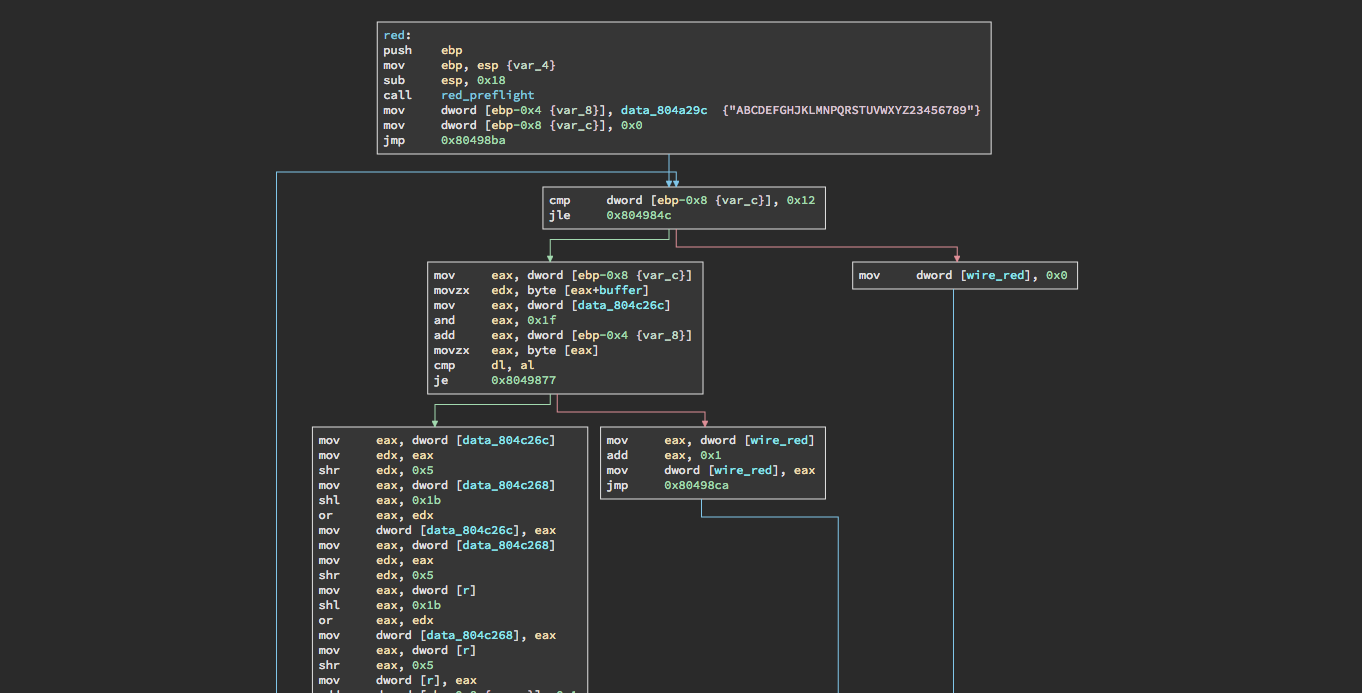
IDA
IDA is the oldest, works well on windows binaries, detects structures, colors are customizable (if you're into that)
Little harder to use, but you get more analysis tools in the background. Basically operates the same way you would Binja
Emacs of disassembly
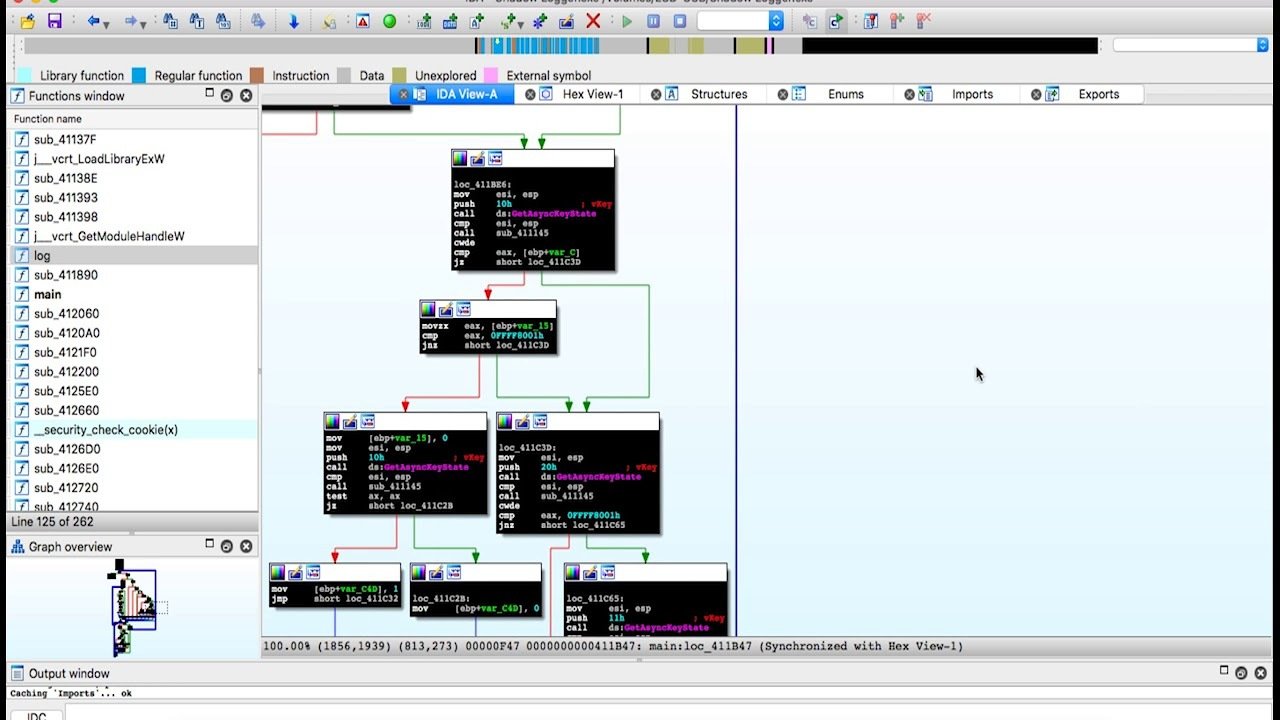
Radare2
Originally written as a hexeditor, grew into a massive disassembler
/debugger/forensics tool all at the same time.
Really hard to use, super powerful, can do pretty much anything. CLI, no good GUI
Vim of disassembly plus a toaster&blender&knife set.


Ghidra
Open source Disassembler recently released by the NSA.
Decompilation feature that would cost a lot of money otherwise

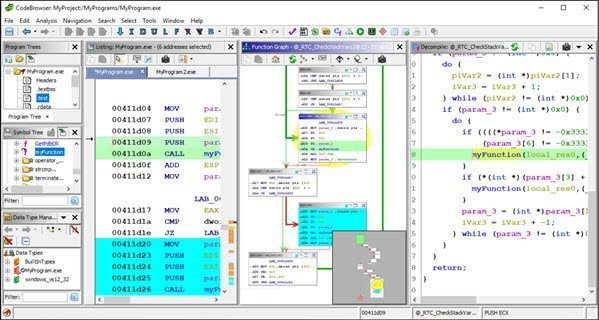
Traces
Ltrace
Library Trace -
Allows us to see the libc calls in the order they are called, as well as arguments to each call
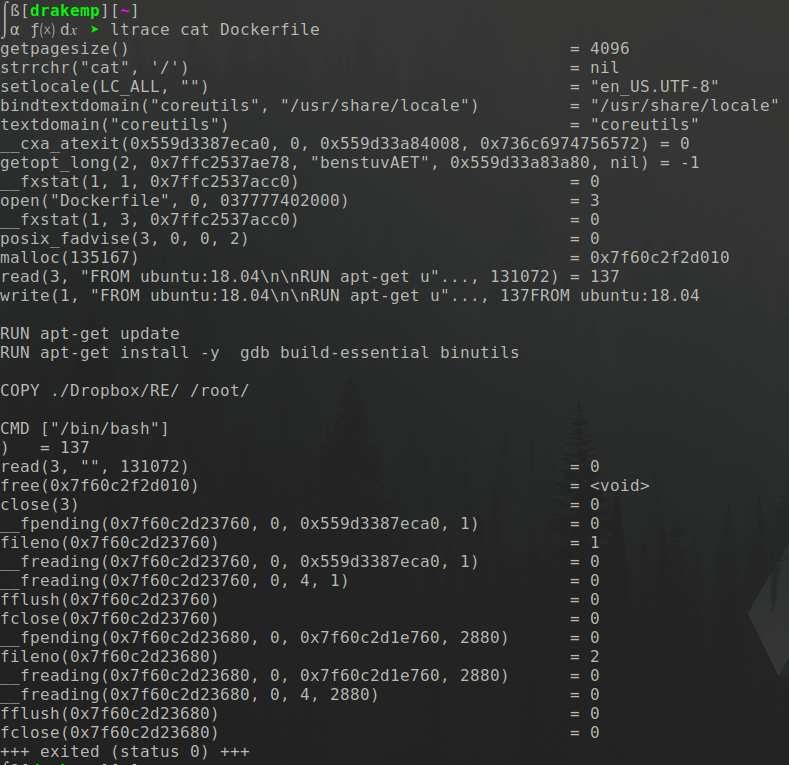

Opening
Malloc
Output
Return values
Strace
System trace -
Similar to ltrace, shows all system calls made by the process in the order they occur and arguments to them.
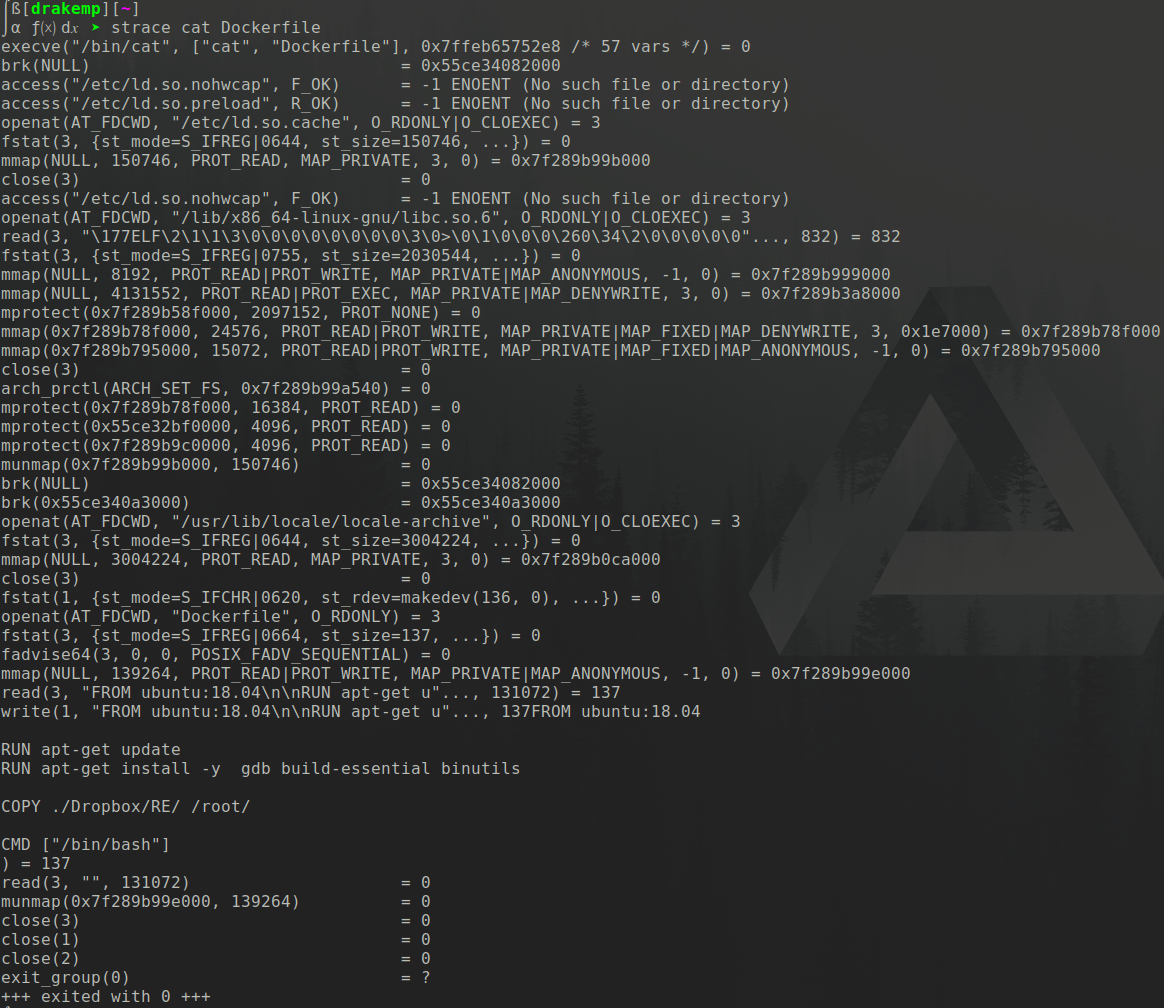

What is all of this?
What about these?
Syscalls that set up the running process
Syscalls from our process
Ptrace

How does strace and ltrace work?
What can ptrace do?
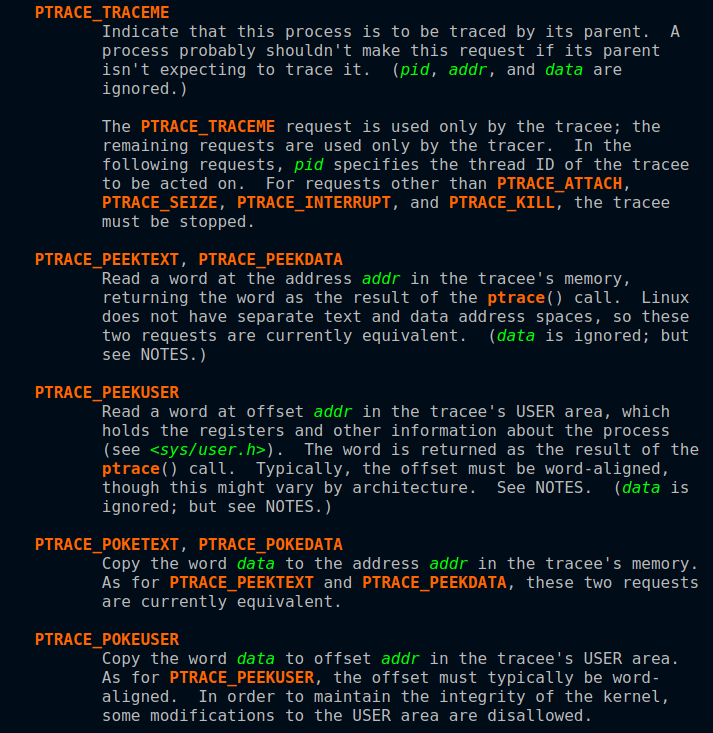
And a lot more!
Reverse the Demo
We know there's a bind shell
What tools should we use to reverse this binary?
Thinks we want to know:
- Where is the injected code
- How is it called?
- What does it actually do?

This is the reversing part btw
Challenge!
This is not a code injection
This is a CTF style challenge, figure out the input to produce the special output.
This is has many hints and things to find as you reverse it so that you learn more than you struggle!

CSEC - RE
By Drake P
CSEC - RE
- 346



